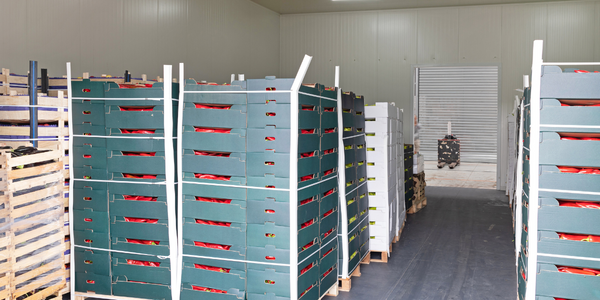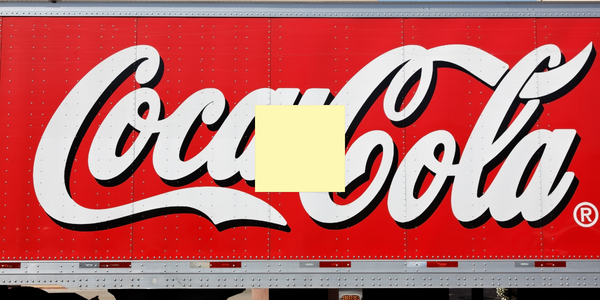Aaron Thomas Company Leverages Plex Manufacturing Cloud for Enhanced Inventory Management and Customer Satisfaction

公司规模
Mid-size Company
地区
- America
国家
- United States
产品
- Plex Manufacturing Cloud
技术栈
- Cloud ERP
- Web-based Customer Portal
实施规模
- Enterprise-wide Deployment
影响指标
- Productivity Improvements
- Customer Satisfaction
- Cost Savings
技术
- 功能应用 - 企业资源规划系统 (ERP)
适用行业
- 食品与饮料
适用功能
- 质量保证
- 仓库和库存管理
用例
- 库存管理
- 预测性维护
- 远程资产管理
服务
- 云规划/设计/实施服务
- 系统集成
关于客户
Aaron Thomas Company is a full-service contract packaging company providing specialist services from bundle wrapping to pouching, pallet displays, and more. The company serves a diverse range of customers, spanning from Fortune 500 companies to small and midsize businesses within the food industry. Located in Garden Grove, CA, Aaron Thomas Company has established itself as a key player in the contract packaging sector, known for its commitment to quality, transparency, and agility. The company has been recognized with accolades such as “Contract Manufacturing Supplier of the Year,” highlighting its dedication to maintaining high performance levels and quality standards. As a fast-growing company, Aaron Thomas Co. understands the importance of strong customer relationships as a competitive advantage. The company operates in highly regulated industries, including food, nutraceuticals, and pharmaceuticals, where inventory tracking, quality control, and traceability are critical. With a focus on securing future growth and maintaining its reputation, Aaron Thomas Company sought to implement a robust ERP system to address its business challenges and support its expanding operations.
挑战
As a fast-growing contract packaging company, Aaron Thomas Co. recognized that its customer relationships are a great competitive weapon. But to maintain such rapid growth, the status quo of legacy applications, paper and manual processes just weren’t going to cut it anymore. Aaron Thomas Company had one eye on securing its future growth and the other on maintaining its performance levels and quality. This is something that has earned the company accolades such as “Contract Manufacturing Supplier of the Year” – and it is what drove Aaron Thomas Company to set out to find an ERP that could help solve some of its most pressing business challenges. Dealing with customers in highly regulated industries like food, nutraceuticals and pharmaceuticals, Aaron Thomas needs to track 100 percent of their inventory at all times. And as a contract packager, customers fully rely on them for centralized inventory visibility, quality controls and the traceability to perform recalls in a short period of time. To top it off, it was critical to find a new system that could be implemented quickly and scale with a quickly growing business.
解决方案
Aaron Thomas ultimately implemented the Plex Manufacturing Cloud, coming in 20 percent under budget enabling complete real-time visibility into inventory, automating the quality control process, and providing customers with the transparency and self-service to continue to scale operations. Plus, employees can remotely manage the business across the three distributed plants whether in an airport, car or at a remote office. Now, locating lost inventory is simple because every piece of information is tracked in Plex. What used to take hours, now takes minutes. And the company now has fully standardized quality control and compliance processes in the cloud. Users can instantly monitor which internal and external audits have been completed, when they were performed, and by whom. And best of all, mock recalls can now be conducted in a mere 7 minutes with all documentation sent to a customer in under an hour – a process that previously took several people and several days. In moving to the Plex Manufacturing Cloud, Aaron Thomas has been able to achieve all their goals. The company’s quality department has gone completely paperless with Plex and executes most of their work exclusively on tablets. Mock recalls now happen in a matter of minutes, and customers can access their information 24/7 from anywhere, allowing Aaron Thomas to handle three times as many customers without adding headcount. Best of all, Plex gives Aaron Thomas room to grow well into the future. Cloud-based ERP is almost infinitely configurable, so it can constantly be conformed to a food and beverage manufacturer’s evolving needs.
运营影响
数量效益

Case Study missing?
Start adding your own!
Register with your work email and create a new case study profile for your business.
相关案例.

Case Study
The Kellogg Company
Kellogg keeps a close eye on its trade spend, analyzing large volumes of data and running complex simulations to predict which promotional activities will be the most effective. Kellogg needed to decrease the trade spend but its traditional relational database on premises could not keep up with the pace of demand.

Case Study
HEINEKEN Uses the Cloud to Reach 10.5 Million Consumers
For 2012 campaign, the Bond promotion, it planned to launch the campaign at the same time everywhere on the planet. That created unprecedented challenges for HEINEKEN—nowhere more so than in its technology operation. The primary digital content for the campaign was a 100-megabyte movie that had to play flawlessly for millions of viewers worldwide. After all, Bond never fails. No one was going to tolerate a technology failure that might bruise his brand.Previously, HEINEKEN had supported digital media at its outsourced datacenter. But that datacenter lacked the computing resources HEINEKEN needed, and building them—especially to support peak traffic that would total millions of simultaneous hits—would have been both time-consuming and expensive. Nor would it have provided the geographic reach that HEINEKEN needed to minimize latency worldwide.

Case Study
Energy Management System at Sugar Industry
The company wanted to use the information from the system to claim under the renewable energy certificate scheme. The benefit to the company under the renewable energy certificates is Rs 75 million a year. To enable the above, an end-to-end solution for load monitoring, consumption monitoring, online data monitoring, automatic meter data acquisition which can be exported to SAP and other applications is required.

Case Study
Coca Cola Swaziland Conco Case Study
Coco Cola Swaziland, South Africa would like to find a solution that would enable the following results: - Reduce energy consumption by 20% in one year. - Formulate a series of strategic initiatives that would enlist the commitment of corporate management and create employee awareness while helping meet departmental targets and investing in tools that assist with energy management. - Formulate a series of tactical initiatives that would optimize energy usage on the shop floor. These would include charging forklifts and running cold rooms only during off-peak periods, running the dust extractors only during working hours and basing lights and air-conditioning on someone’s presence. - Increase visibility into the factory and other processes. - Enable limited, non-intrusive control functions for certain processes.

Case Study
Temperature Monitoring for Restaurant Food Storage
When it came to implementing a solution, Mr. Nesbitt had an idea of what functionality that he wanted. Although not mandated by Health Canada, Mr. Nesbitt wanted to ensure quality control issues met the highest possible standards as part of his commitment to top-of-class food services. This wish list included an easy-to use temperature-monitoring system that could provide a visible display of the temperatures of all of his refrigerators and freezers, including historical information so that he could review the performance of his equipment. It also had to provide alert notification (but email alerts and SMS text message alerts) to alert key staff in the event that a cooling system was exceeding pre-set warning limits.

Case Study
Coca-Cola Refreshments, U.S.
Coca-Cola Refreshments owns and manages Coca-Cola branded refrigerators in retail establishments. Legacy systems were used to locate equipment information by logging onto multiple servers which took up to 8 hours to update information on 30-40 units. The company had no overall visibility into equipment status or maintenance history.






